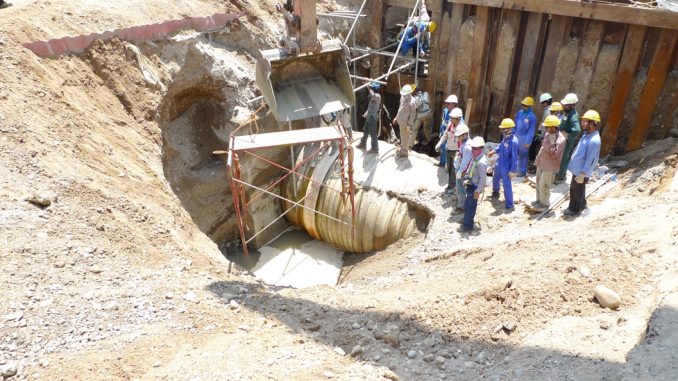
GRP pipes. FRP pipes. What is the difference? Absolutely nothing. Different parts of the world use different acronyms, but they are describing exactly the same material – fibreglass reinforced plastic pipes.
GRP was initially developed at the beginning of the 20th century. Its early use was for insulating houses but further applications soon evolved, including in the shipbuilding, automobile and aircraft industry.
What made GRP popular was its strength and durability – two qualities highly desired when it comes to materials for making pipes.
The Swiss were the first to recognise this and before long, they were laying GRP water networks. Fibreglass reinforced pipes now come in all different sizes for use in pipework projects across the world.
What is GRP / FRP pipe?
GRP is a composite material normally consisting of thermosetting resin and glass fibres. The resin is the plastic element responsible for the pipe’s high chemical and environmental resistance. The fibreglass adds strength to the composite.
The simplest way to think of GRP is that it is plastic which has been reinforced with glass fibre, making it much stronger than your everyday plastic piping.
As with all composite materials, the components supplement each other by forming a stronger compound when present together.
GRP is able to withstand compressive and tensile forces far better than normal plastics, making it longer lasting and more resistant to factors like corrosion, high temperatures and pressure.
What are the benefits of GRP / FRP pipes?
Strength and resistance against corrosion and environmental factors are only the start of the advantages of GRP. The fibres included add a degree of elasticity to the material, allowing it to be formed into complex shapes without compromising the strength of the material.
Whereas metal pipes tend to be weaker on elbow bends for example, FRP remains consistently strong. This makes it popular for fabricating pipes used in networks which require twists and turns along the way, knowing there is less chance of pipe elbow repair or reinforcement being required in the future.
GRP offers a high strength to weight ratio, which is why it is frequently found in the aerospace and automobile industry. It offers the strength of steel for a fraction of the weight.
The lighter a pipe material, the easier and less expensive it is to install. Huge pipelines up to 3 metres in diameter installed as part of major infrastructure projects like desalination plants in the Middle East are made of FRP because of the ease with which it can be made, transported and installed.
With such a long life expectancy, GRP is considered one of the more environmentally friendly pipeline materials. Replacement parts do not need to be fabricated for many years and it is rare for GRP pipe repair to take place because the material will not crack, bend, dent, melt or damage easily.
Where are GRP / FRP pipes used?
FRP pipes are used in a broad range of applications across the world. Ever since the Swiss first developed GRP water pipes, the material has served water and sewerage networks.
The high chemical resistance of FRP makes it an excellent choice for pipes transporting oil, sulphuric acid and other petrochemicals.
Likewise, GRP’s resistance to corrosion is desirable in marine and underwater environments, including seawater cooling systems and aforementioned desalination plants.
Oil rigs are increasingly turning to FRP for both corrosion and chemical resistance reasons, whilst the material’s durability makes it suitable in harsh conditions such as deserts and hot climates.
Other types of GRP / FRP pipes
Specialist resins can be used in GRP pipes for specific requirements. If the pipe needed to be fire retardant for example, a non-flammable resin would ensure that it would not catch light in the event of a fire.
This sort of customisation is extremely useful in industries where highly flammable materials are found, such as oil and gas.
Alternatives to glass fibres can also be used. Carbon fibre further enhances the elasticity of FRP and boosts compressive and electrical strength.
It is heavily used for medical equipment and in the aerospace sector. The Airbus 310 has rudders made from carbon FRP.
Basalt meanwhile offers the highest chemical and heat resistance of any fibre. Boats, bridges and piers using FRP will all use basalt as their fibre.

Leave a Reply